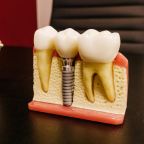
Reducing surgical infections could hit hospitals financially
Reducing the number of patients who experience a Surgical Site Infection (SSI) could hit hospitals financially, new research has found.
The research, led by Consultant Microbiologist Dr Peter Jenks from Plymouth, has been accepted for publication in the Journal of Hospital Infection. It is available on their website.
Surgical Site Infections – infections which develop at the site of surgery following an operation - are common, carrying with them significant morbidity and mortality and many are preventable. Many infection rates in areas such as MRSA and C. difficile have already been significantly reduced nationally over the last decade, but the same cannot be said for SSI rates.
Last week NICE published a Quality Standard on Surgical Site Infection, following the work of a topic expert group which was chaired by Dr Jenks.
However, this new research shows that, although there is a clinical imperative to reduce all infections, under the current system where hospitals are reimbursed for treating patients with conditions and often paid more when complications develop, there is a financial disincentive to reducing this particular kind of infection.
This is the first research of its kind to show this in the UK as this is the first-time actual patient episode cost has been linked to a clinical outcome in this way.
The new research gives accurate and actual costs of SSIs over a two-year study period. These show that, on average, a patient with an SSI stays in hospital for 10 days with a total of 4,694 bed days lost and the excess total cost for all patients with an SSI amounted to £2,491,424 million. Patients with this type of infection are three times more likely to be re-admitted to hospital than those without.
Clinically, the drive is on to reduce surgical site infections to improve the patient experience and the impact on acute hospitals. But to do so could leave hospitals financially worse off.
Researchers estimated the opportunity cost of having zero SSIs over the two year period. This was done by assessing the income that would have been generated if the released additional beds had been used to perform additional activity. This was then aggregated with the savings that would have been made from eliminating SSIs to give the overall financial impact if all SSIs had been eliminated. This had less impact on 'profitability' than predicted.
The financial benefit to the hospital of eliminating SSIs was less than the cost of SSIs for each surgical category. For seven surgical categories, the hospital would have been worse off if all SSIs had been eliminated over the two year period.
This is because, based on the current fee-for-service model operated in the NHS, hospitals continue to receive income for those patients with an SSI. This means that, in some cases, patients with an SSI bring in more money for hospitals than the cost of treating them.
Lead author Dr Jenks said: “We are committed to continue to perform surveillance of wound infection rates and taking every measure possible to stop our patients developing an infection at the site of their surgery after an operation. One would have thought that reducing all infection rates would be better for patients and hospitals. But our research has shown a concerning paradox.
“It has uncovered a financial disincentive to reduce SSIs. This data and the understanding it brings with it is important for patients, hospitals and commissioners because it allows the paradox to be addressed and the right incentives introduced which may actually help reduce SSI rates.”
Co-author Sarah McQuarry, Finance Systems and Costing Accountant at Plymouth Hospitals, said: “Better understanding of costs highlights where investment in preventative measures can be effective and the scale of potential savings to be made if cost-effective programmes are introduced.
“At the moment, the cost of SSIs is extremely high to the patient and the health service but hospitals are paid accordingly for treating patients with them, which in turns leads to a decline in income if SSIs are reduced.”
The research does suggest a possible way of addressing this, using a system of reward rather than a punitive measure based on SSI rates.
Dr Jenks added: “Rather than using a renumerative process that disincentivises improvements in clinical practice or imposing disproportionate target penalties, developing a system based on financial rewards, perhaps similar to the Commissioning for Quality and Innovation (CQUIN) system would be more likely to be productive”.
Co-author Mark Laurent, Data Analyst at ICNet International, said: “The use of patient level cost and income data combined with clinical outcome data provides a new understanding of the cost implication of patient harm. The current UK data on costs is estimated from manual datasets and over 10 years old. Out study sought to update that.”
Few hospitals perform comprehensive surveillance and feedback of SSI rates, which is key to reducing rates. The research was able to be carried out at Plymouth Hospitals NHS Trust because the Trust performs comprehensive surveillance and feedback of SSI rates and has comprehensive financial data available at patient-level.











